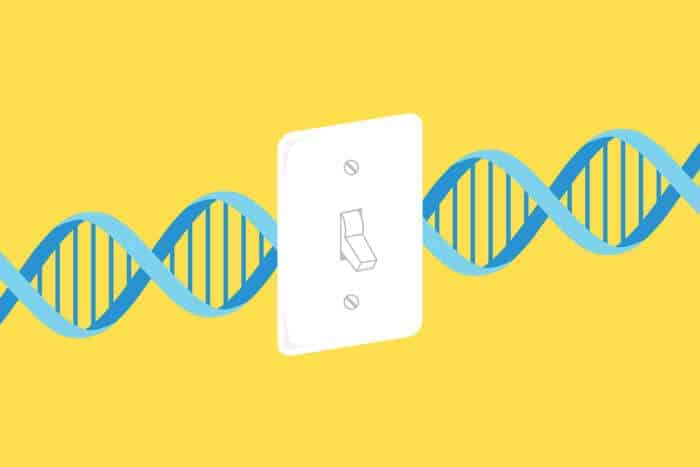Every time you play a game of basketball, make a cup of coffee or flick on a light switch, you are turning on genes in your brain. These same genes typically are turned off when the activity ceases – but when that doesn’t happen, damaging consequences can occur.
A study in mice at Washington University School of Medicine in St. Louis shows how such genes stuck in the “on” position can lead to faulty brain wiring that affects learning and memory.
“We’ve shown in mice that genes don’t just shut off by themselves; there’s an active mechanism to turn off genes after they’re turned on,” said Azad Bonni, MD, PhD, the Edison Professor of Neuroscience and head of the Department of Neuroscience. “If that mechanism is disrupted in the brain, you see serious consequences for learning and memory.”
The study is published July 15 in Science.
Genes in living cells constantly are being turned on and off in response to signals as diverse as physical activity, hormones and microbial infection. Decades of research have gone into understanding how and why genes turn on, but how genes turn off has consistently received less attention.
Bonni, Yue Yang, PhD, Tomoko Yamada, PhD, and colleagues decided to investigate how genes turn off in the brain. In doing so, they found that the inability to turn off such genes leads to faulty brain wiring.
The researchers studied genes in the cerebellum of mice – the part of the brain responsible for motor functions such as walking – that turn on when the mice are physically active.
They found that a large enzyme is bound to the genes that are turned on when the mice move about, but not to the genes that are not switched on by movement. The enzyme, known as the nucleosome remodeling and deacetylase (NuRD) complex, appears to be critical to turning off genes. Mice that lack the enzyme are unable to turn off the genes after physical activity ceased.
The enzyme, the scientists found, turns off genes by switching out one kind of a DNA-associated protein for another. These proteins, called histones, serve as spools around which the DNA thread is wound, in some places tightly and other places loosely. By switching out one kind of histone for another, the enzyme causes the DNA to be more tightly wound, shutting off any genes in that section of DNA.
“Turning on and off genes is a fundamental property of cell biology, and this is the first epigenetic mechanism that explains how you turn off genes after they’re turned on,” Bonni said. “I think we’ll find that this mechanism turns off genes in many different contexts.”
Epigenetics refers to factors apart from the DNA sequence itself that affect whether genes are on or off.
“We think that the NuRD complex has the potential to rapidly turn off thousands of genes,” said Yamada, co-lead author on the study and an assistant professor of medicine at the University of Tsukuba in Japan.
During development, neurons form many connections with each other and then prune back all but the most important ones. Neurons in the cerebellum of mice lacking the enzyme do not prune, leaving abnormal connections in place.
“We were surprised to discover that failure to prune connections caused abnormal responses of the neurons to the environment,” said Yang, a postdoctoral researcher and co-lead author on the study. “Our study reveals the importance of eliminating the excess connections formed in early development.”
Such connections did not affect the mice’s ability to walk but did affect their ability to learn motor skills as adults. In people, learning a motor skill would include learning how to play the piano or ride a bicycle.
Adult mice lacking the enzyme were unable to learn how to walk on a rotating rod that gradually sped up, a task other mice could do easily.
“They’re walking normally, they’re coordinated, but they are really profoundly impaired in learning,” Bonni said. “What’s really surprising is that these deficits are due not to failure to activate genes but to failure to turn them off.”
Bonni and colleagues are working on figuring out the mechanism by which changes in gene activity lead to changes in brain cell activity.
“This enzyme is related to other enzymes that are mutated in neurodevelopmental diseases,” Bonni said. “The ability to turn off genes turns out to have profound consequences for brain wiring and learning, and we want to figure out how.”


